I often hear this question: What are Display Stands for Retailers? Display stands are tools. They help me show products better. They guide customers. They increase sales. As a retailer, I know space matters. I also know visibility matters. Display stands solve both problems. They keep my products organized and attractive. In this article, I will answer in detail. I will share my understanding. I will explain uses, types, benefits, and why Fairwill Display is my trusted partner. Display stands for retailers showcase products clearly, attract customers, and maximize space, helping stores boost sales.
Table of Contents
ToggleUnderstanding Display Stands
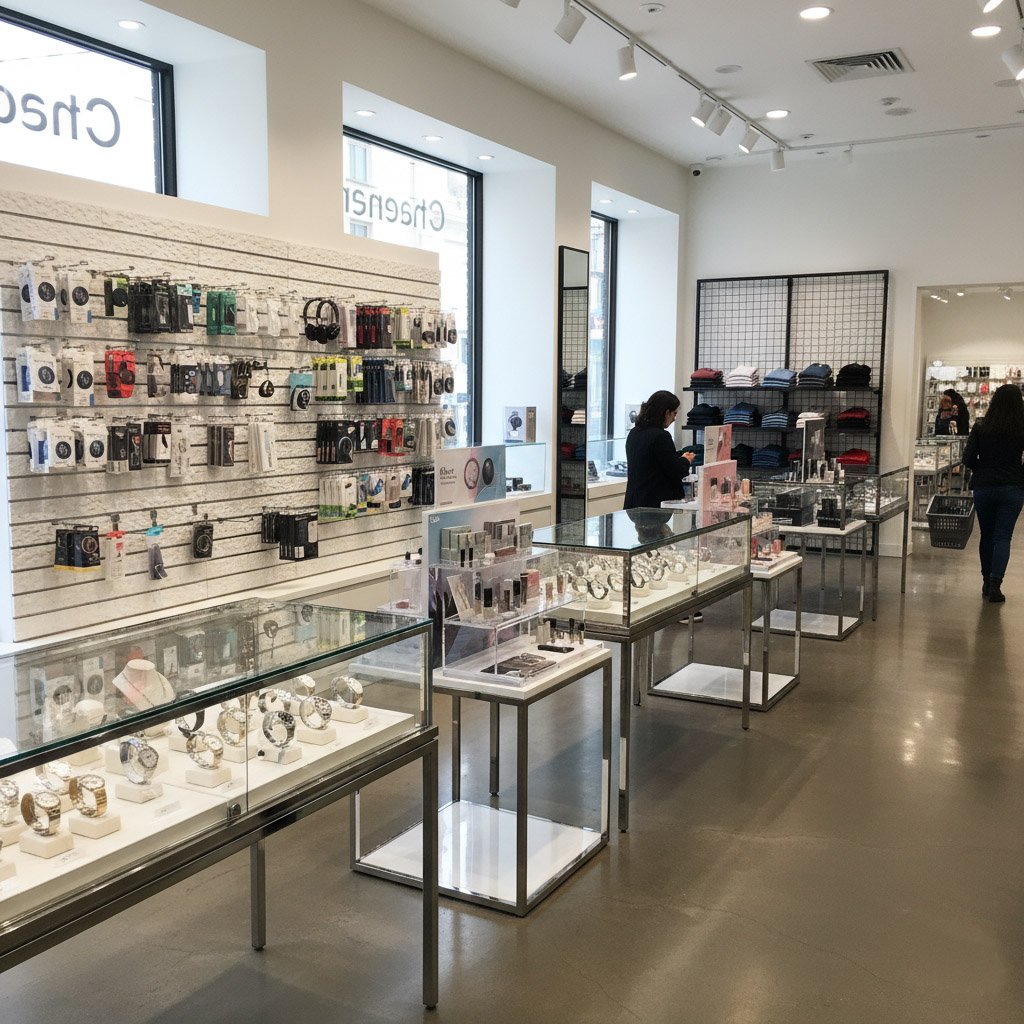
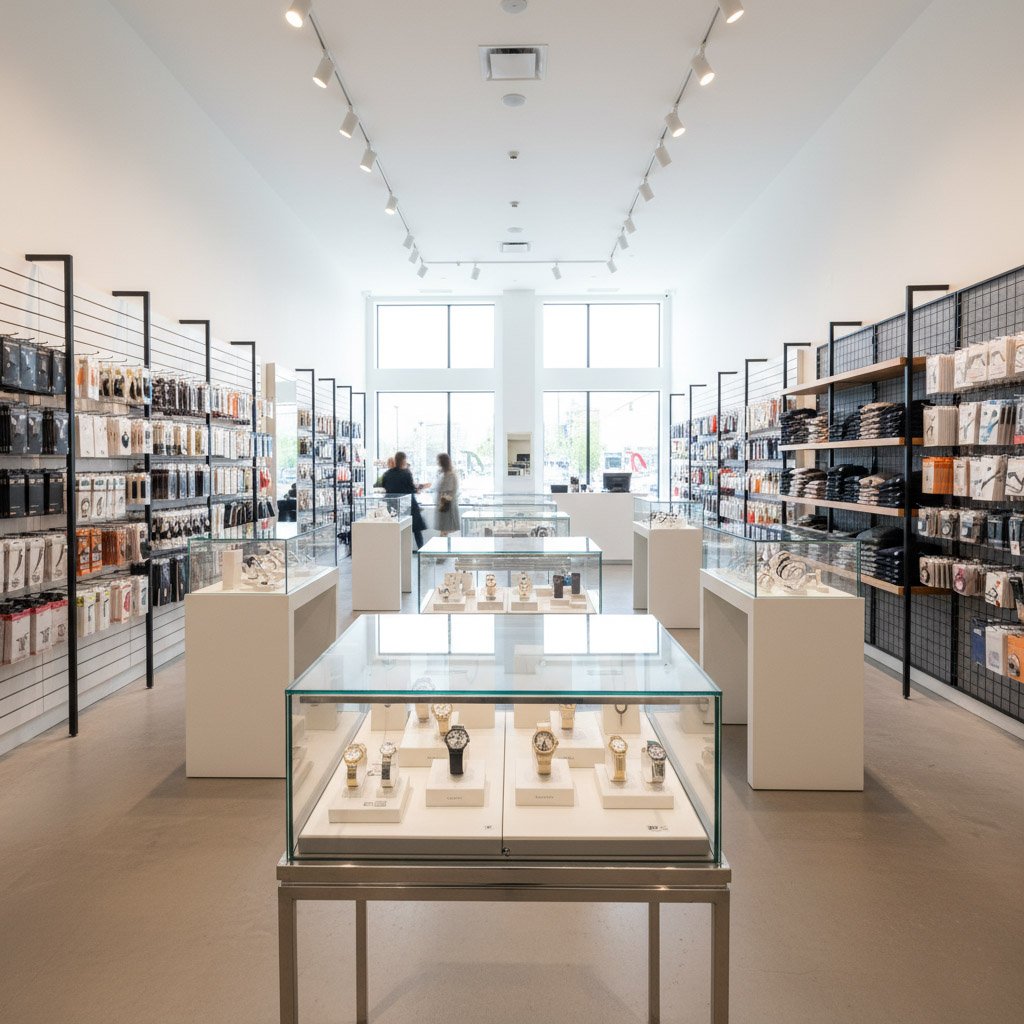
The Purpose of Display Stands
The question: What are Display Stands for Retailers? always begins with purpose. A display stand is more than furniture. It plays a role as a silent seller in every store. The purpose is to guide attention. Customers walk in, and their eyes move toward highlighted products. Placement matters, and the stand makes it possible.
In addition, display stands improve product visibility. Items placed neatly catch attention faster than those scattered randomly. A clear presentation increases customer trust. When shoppers see an organized layout, they assume quality behind the brand. As a result, stands create a stronger connection between the store and the buyer.
Moreover, purpose links to customer convenience. Display stands simplify the shopping journey. They reduce time spent searching and help customers feel at ease. With products arranged logically, movement feels natural. This makes visitors spend more time inside, which often translates into more sales. The purpose, therefore, goes beyond holding items. It is about shaping experiences.
Types of Display Stands
After understanding purpose, the next step is recognizing types. The question What are Display Stands for Retailers? leads naturally to this. Different types meet different needs. No single format suits all stores. Selection depends on products, layout, and desired customer flow.
One type is pedestal stands. These stands highlight single items. They create focus and give importance to featured goods. Many retailers use them for new arrivals or luxury products. Pedestals raise items above the crowd and give them prominence.
Another type is tiered stands. These maximize vertical space and allow multiple levels of display. Books, cosmetics, or small packaged goods benefit from this style. Tiered structures provide visibility without clutter. Each product receives its own space, yet everything stays compact.
Wall-mounted stands also deserve attention. They use empty wall areas effectively. By placing products vertically, stores save floor space. This style works well in smaller shops or boutiques. It keeps areas open while still showing a wide range of goods. Each type has unique benefits, and choice depends on business goals.
Why Display Stands Matter
Once types are clear, the importance becomes more visible. Asking What are Display Stands for Retailers? without mentioning impact misses the bigger picture. Display stands matter because they influence how shoppers feel. A store without them looks unorganized. Customers sense chaos and leave sooner.
With display stands, products gain order. Neatness creates a sense of professionalism. Shoppers feel more comfortable browsing. They stay longer because navigation feels simple and pleasant. In addition, stands add layers of design. They create structure and rhythm inside the store. This atmosphere shapes customer mood.
Furthermore, display stands support storytelling. A seasonal stand signals change. A themed stand communicates promotions. Each setup speaks silently but powerfully. Customers pick up these signals and respond. When shoppers connect emotionally, they remember the store. Stands, therefore, matter not only for selling but also for branding.
The Role in Modern Retail
The modern marketplace adds new layers to What are Display Stands for Retailers?. Stands are not static objects anymore. They are tools for adapting quickly to shifting trends. Retailers must refresh layouts often, and stands make this possible. Flexible structures allow fast changes without major cost.
Technology also influences their role. Digital screens now combine with physical stands. Together, they create hybrid displays. These merge physical products with dynamic content. Customers get information instantly, while still enjoying touch and feel. This mix reflects modern retail expectations.
Sustainability also shapes their role. More retailers choose eco-friendly boards or recyclable materials. Customers notice these details. They see responsibility and align with brands that care. Display stands, once simple wood or metal, now reflect values. They show how a retailer positions itself in a responsible market. In modern retail, stands do more than display. They embody adaptability, technology, and sustainability.
Factors When Choosing Display Stands


Store Environment
When I think about What are Display Stands for Retailers?, I also consider my store environment. A stand that looks perfect in one shop may fail in another. Bright spaces need stands that reflect light well. Darker stores need lighter colors to add balance. The stand must match the mood of the store. If the atmosphere is modern, sleek materials like glass or polished boards make sense. When the shop feels rustic, natural wood fits better. Transitioning between store themes can confuse customers, so I keep the environment consistent. The right stand not only holds products but also strengthens the store’s visual style. It makes the whole place look united. In this way, customers feel harmony and trust what they see.
Customer Behavior
Another factor is customer behavior. Every store attracts a specific audience, and each group behaves differently. A boutique filled with young shoppers may benefit from interactive stands with open access. They like touching items and exploring freely. A store that sells luxury watches needs locked glass stands. That protects value and still shows quality. Shoppers in busy discount outlets often prefer quick scanning. For them, wide racks and slatwall stands save time. Observing customer movement helps me choose wisely. If customers hesitate to approach a stand, it might not be the right one. I change designs until the flow feels natural. In this way, display stands work with behavior, not against it. This balance encourages longer visits and stronger sales.
Durability and Maintenance
Next comes durability. When I ask myself What are Display Stands for Retailers?, I realize the answer is not only about sales. It is also about lasting use. A weak stand breaks after a season, wasting money. A durable stand supports weight and handles daily use. Maintenance also matters. Some materials stain quickly. Others scratch with small contact. A smart choice resists both. For example, tempered glass cleans easily. E1 boards resist warping. Durable stands reduce repair costs and save time. Transitioning from short-term savings to long-term thinking changes the decision. Instead of buying the cheapest option, I focus on strong value. That way, the stand serves me for years, not months. Customers see stability and gain more confidence in the store.
Practical Functionality
Finally, functionality is critical. A display stand should do more than look attractive. It must fit the store’s daily rhythm. Assembly and movement are two examples. A stand that takes hours to assemble wastes staff time. A stand that moves easily saves effort during store rearrangements. Storage space inside a stand is another benefit. Hidden drawers help me store extra stock. Adjustable shelves adapt to new product sizes. This flexibility avoids buying new fixtures too often. Transitioning between collections becomes simple. Functionality means supporting operations, not complicate them. A store feels smoother when fixtures perform more than one role. Customers sense this organization and enjoy shopping more.
Benefits of Using Display Stands
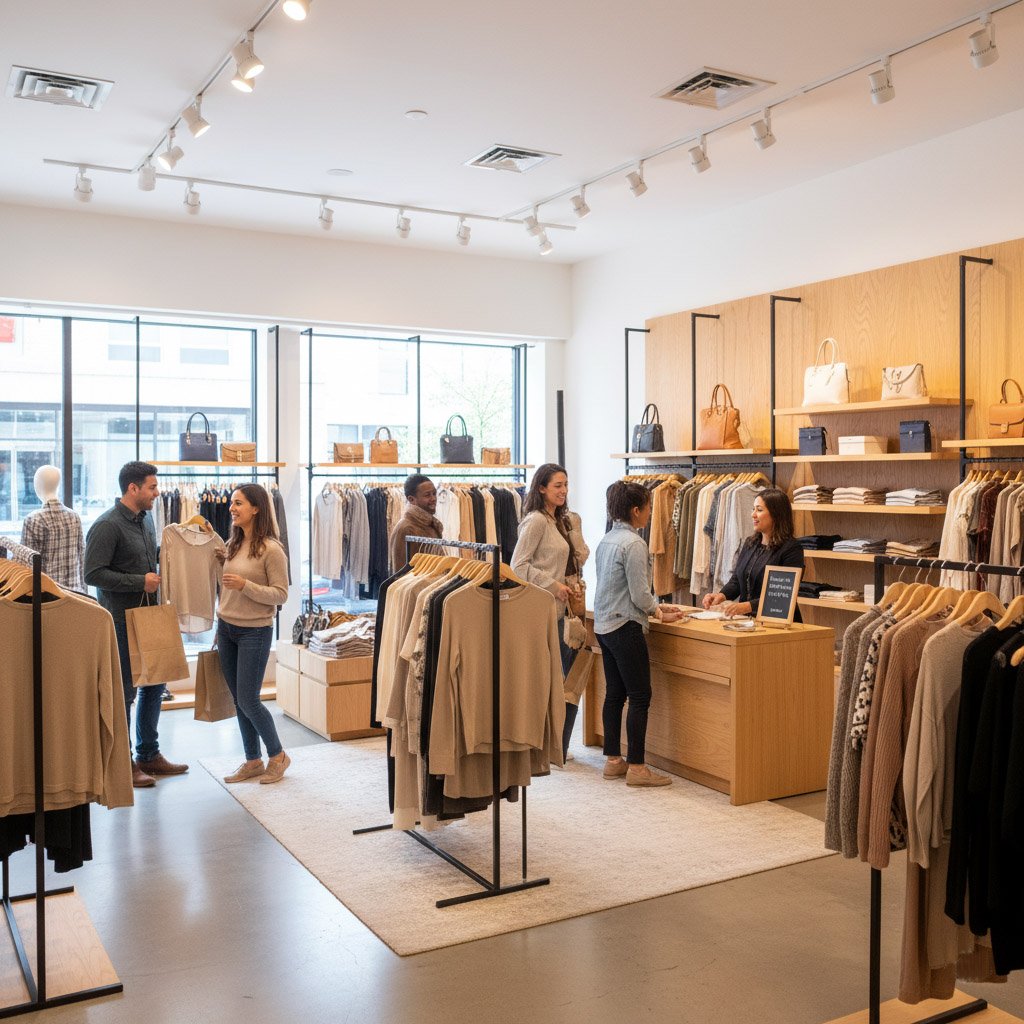
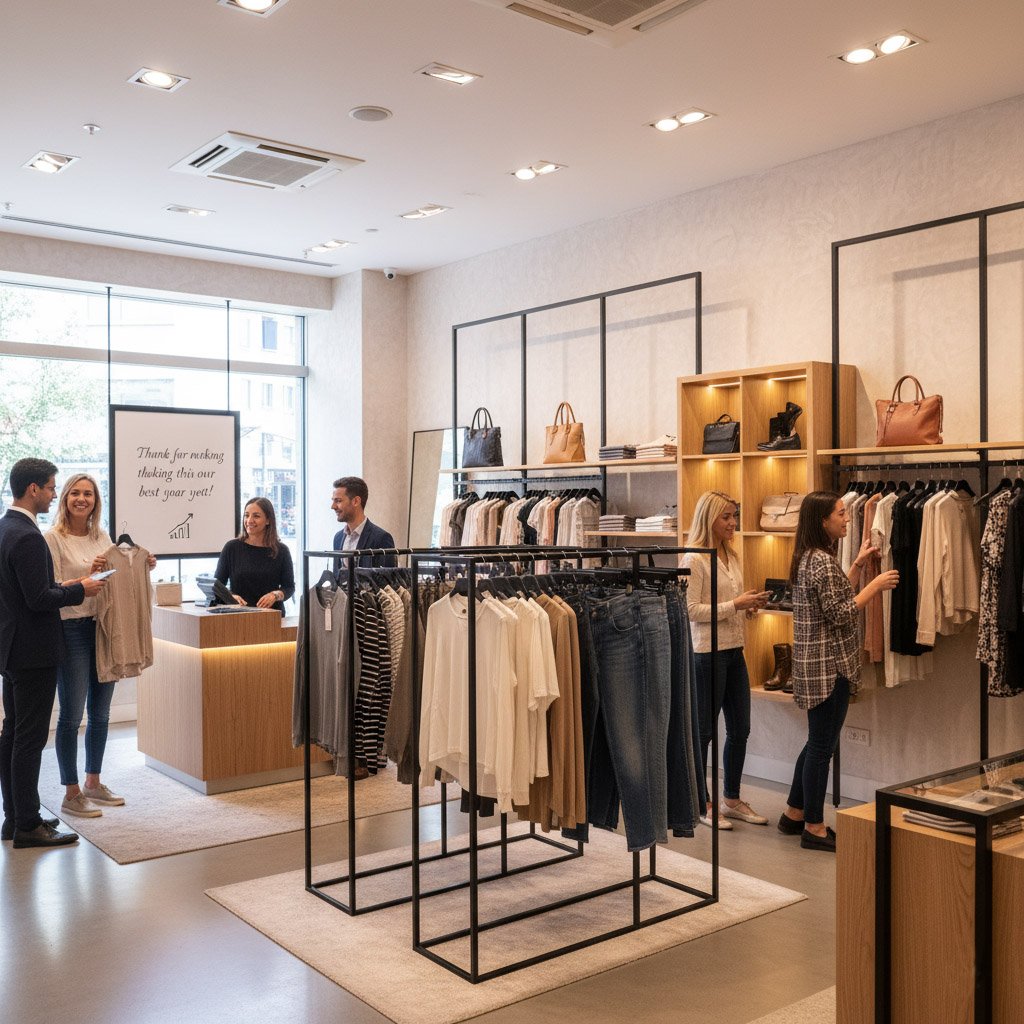
Increasing Product Visibility
One major benefit of using display stands is enhanced visibility. Customers notice products more easily when they are presented at the right height and angle. Bright lighting and open designs attract attention quickly. A product on a dedicated stand appears important and valuable. This creates curiosity and drives closer inspection. When shoppers see items clearly, they feel more confident about buying them. Over time, this visibility encourages repeat interest and builds trust in the store’s layout. Compared to hidden or poorly placed stock, displayed items communicate value and purpose. Therefore, improved visibility directly supports higher product recognition and customer engagement.
Furthermore, visibility influences decision-making speed. Shoppers often make fast choices when products are visible and easy to reach. The human brain processes organized layouts more efficiently than cluttered areas. With clear sightlines, customers need less effort to scan options and select what they want. This simple experience saves time and creates satisfaction. Because of this, display stands act as silent sales promoters, encouraging action without staff involvement. In contrast, poorly displayed items remain unnoticed and generate weak results. Thus, strong product visibility remains a cornerstone of effective retail presentation.
Encouraging Customer Interaction
Another benefit of display stands is the way they invite interaction. Customers feel free to touch, pick up, and test items when they are presented accessibly. This hands-on experience builds stronger emotional connections between shoppers and products. People are more likely to buy something they have physically engaged with. Unlike locked cabinets or crowded shelves, open stands encourage exploration. Customers enjoy the freedom to move closer, view details, and compare choices. As a result, interaction transforms a simple visit into a more engaging experience that promotes confidence in purchase decisions.
In addition, interaction promotes discovery. Shoppers may find new products while browsing stands, even if they entered the store for something else. This creates opportunities for upselling and cross-selling. For example, a customer looking at clothing may notice accessories placed on a nearby stand and add them to the purchase. Retailers benefit from increased average transaction value. Over time, this interaction-driven discovery fosters customer loyalty because the store feels dynamic and full of surprises. Therefore, display stands function not only as storage but also as tools for creating memorable experiences.
Supporting Seasonal Promotions
Display stands also provide major benefits during seasonal campaigns. Stores constantly adjust layouts for holidays, festivals, or special events. Flexible stands allow easy adaptation to these changing needs. A themed arrangement instantly communicates a festive mood and draws attention to limited offers. Customers often associate colorful displays with excitement, making them stop and explore. Seasonal visibility helps products feel urgent, motivating faster purchasing decisions. Stands, therefore, act as central tools for turning promotional ideas into physical reality without expensive remodeling.
Moreover, seasonal use of display stands keeps the store atmosphere fresh. Regular customers enjoy seeing new setups and feel inspired to revisit often. Instead of feeling repetitive, the shop appears creative and lively. This ongoing change strengthens the brand image as innovative and customer-focused. Promotions become more effective because stands highlight products as special or time-limited. With this method, businesses strengthen both short-term sales and long-term customer relationships. Consequently, display stands directly connect seasonal creativity with consistent retail success.
Building Store Identity
Finally, display stands play a strong role in shaping store identity. Beyond holding products, they communicate style, professionalism, and values. Materials, colors, and arrangements reflect the brand’s personality. For example, sleek glass stands project elegance, while wooden designs express warmth and sustainability. Customers notice these details, forming impressions about the business. A clear identity helps stores stand out in competitive markets and makes them more memorable. Display stands, therefore, become silent ambassadors of the brand, reinforcing reputation with every visit.
Equally important, identity influences customer trust. Shoppers prefer stores that appear organized and aligned with a consistent theme. A carefully chosen display stand arrangement conveys attention to detail. Customers feel that the store respects both products and clients. This emotional trust strengthens the likelihood of repeat visits. Over time, a recognizable identity built through thoughtful displays becomes part of the shopping experience itself. Because of this, display stands are far more than practical tools. They are central elements in creating a cohesive and trustworthy retail environment.
Common Mistakes to Avoid
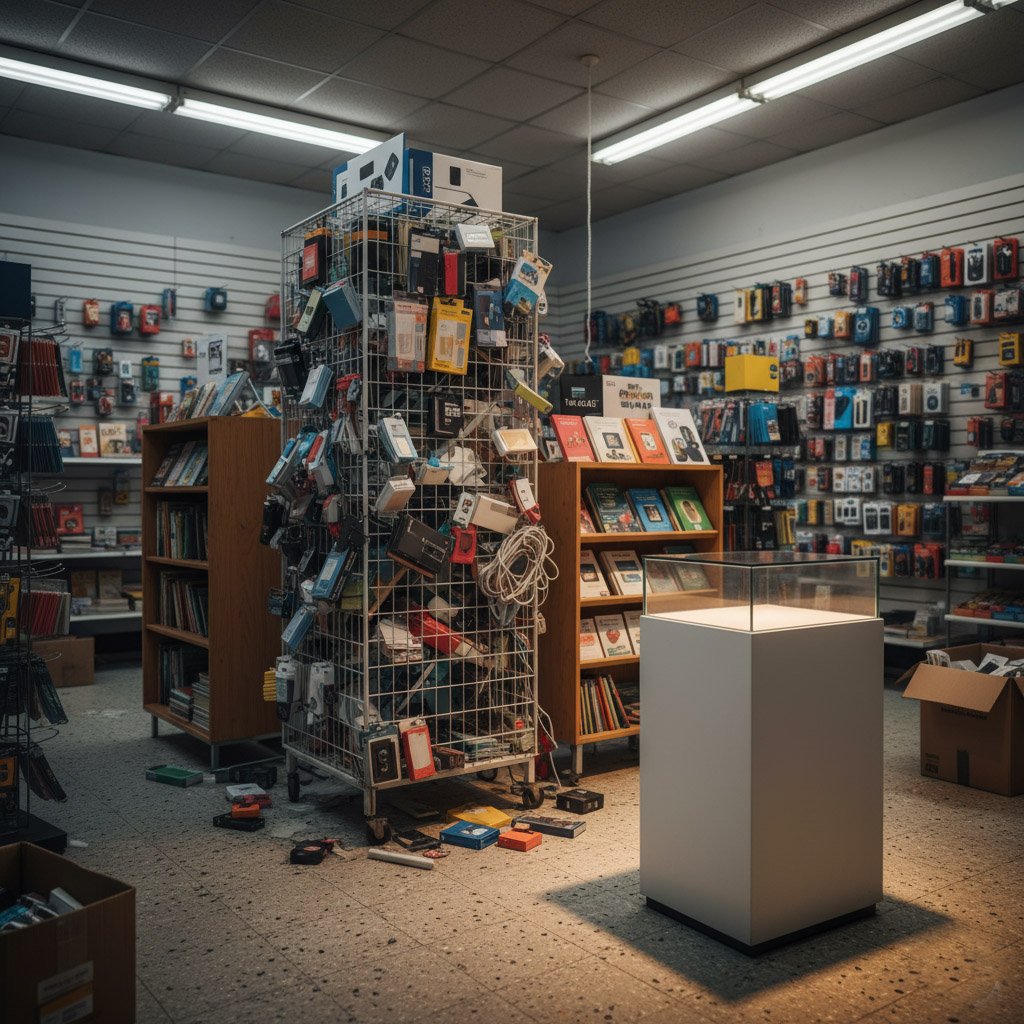
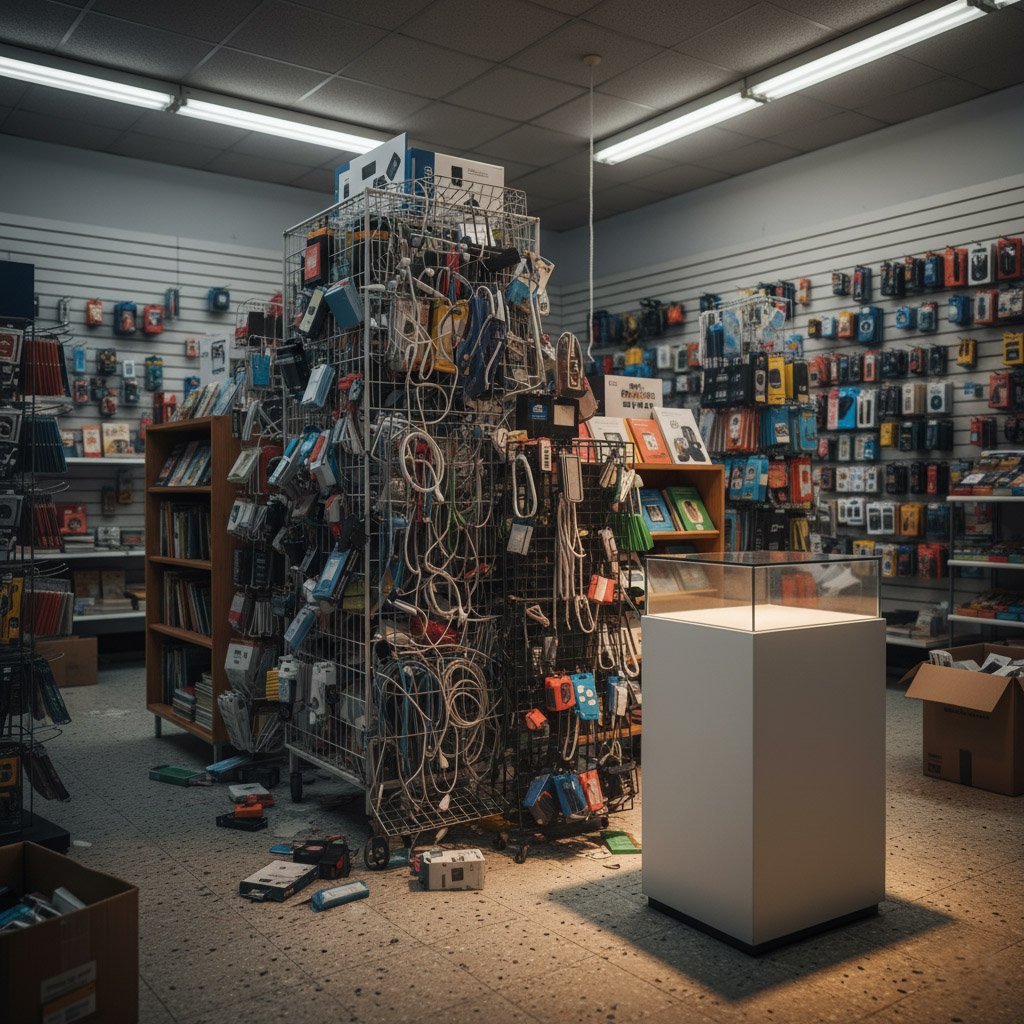
Choosing the Wrong Stand
Selecting the wrong display stand is a frequent mistake. Many retailers buy stands without checking the product type or store environment. A stand designed for light accessories cannot hold heavy boxes. A fragile base cannot carry large merchandise. Stability issues cause risks. Customers may not trust a store if they see unsafe displays. This choice damages reputation and lowers sales.
Therefore, research becomes critical. Retailers should test weight limits and evaluate stand stability before buying. A strong display not only carries the load but also reassures buyers. On the other hand, an unstable fixture creates a distraction. Instead of focusing on products, shoppers focus on imbalance. Smooth operations depend on strong foundations, and so does customer trust. In short, the right stand builds security while the wrong one creates unnecessary problems.
Ignoring Brand Consistency
Another mistake involves neglecting brand consistency. Every display stand speaks about identity. Customers quickly notice if the display design fails to match the store image. For example, a luxury store using cheap plastic stands creates confusion. Shoppers question authenticity. On the other hand, eco-friendly shops using non-recyclable materials send a mixed signal.
Consistency shapes customer perception. Retailers who align colors, finishes, and materials with their brand look more professional. Transitions between different sections of the store also feel smoother. This coherence improves trust and strengthens recognition. Customers remember a store that looks consistent because it feels intentional. Without consistency, the message weakens. Display stands must therefore act as silent ambassadors for the brand. Retailers avoid this mistake by carefully matching every fixture with their identity.
Overcrowding Products
Crowding products on a stand is another critical error. Retailers sometimes believe that showing more items will lead to higher sales. In practice, the opposite often occurs. An overcrowded display looks messy. Customers struggle to focus. They feel overwhelmed and may walk away. Clutter reduces the value of individual products. Items lose visibility because they compete for attention.
Instead, space should guide the eye. A stand with balanced spacing highlights the uniqueness of each product. Shoppers appreciate clarity. They can easily compare and select. Good spacing also adds elegance to the overall display. The experience feels premium, even with affordable products. Transitioning from clutter to clarity requires discipline. Retailers must resist the urge to fill every inch. By presenting fewer items in a structured way, they achieve a stronger impact and higher conversion rates.
Neglecting Customer Flow
Finally, a mistake that often goes unnoticed is ignoring customer flow. Display stands placed in poor positions disrupt natural movement. Shoppers bump into obstacles or struggle to navigate. This frustration shortens visit time and lowers purchase likelihood. Even attractive stands lose their effect if positioned incorrectly.
Planning layout is as important as choosing fixtures. A clear path invites exploration. Wide aisles ensure comfort. Strategic placement encourages customers to move smoothly through the store. Transitioning from entry to checkout should feel intuitive. Display stands that block access or interrupt movement harm sales potential. Retailers should always walk through their store layout before finalizing positions. Testing flow reveals hidden problems and prevents customer dissatisfaction. By placing stands thoughtfully, stores create a welcoming environment where products shine and shoppers enjoy a pleasant journey.
Why Fairwill Display


Expert Guidance for Every Project
Working with Fairwill Display means more than buying fixtures. It means gaining a partner that provides expert guidance. Their team understands retail display needs deeply. Every suggestion reflects years of experience in serving global markets.
Advice is not generic. It is practical and tailored. For example, they help identify which stand style suits premium products. They explain how slatwall designs can save space in small shops. Their recommendations fit both budget and branding goals.
Over time, I have realized that such guidance prevents costly mistakes. Wrong fixtures can hurt store image and reduce sales. Fairwill Display ensures that decisions are smart from the start. This professional advice feels like an extension of my own team.
Customized Solutions that Fit Unique Needs
Another benefit of choosing Fairwill Display is access to customization. Every store has its own layout. Each retailer has unique products and branding. A standard solution often falls short. Fairwill Display fills this gap by offering flexible design support.
Customization includes size adjustments, material options, and design finishes. Retailers can choose tempered glass for premium effect. They can select eco-friendly E1 grade boards to show environmental care. Options create a balance between style and function.
The process is smooth. Communication is clear. Drawings, adjustments, and final approvals happen quickly. As a result, retailers receive fixtures that match their vision perfectly. This level of personalization builds long-term trust and ensures that the final display supports the business goals fully.
Reliable Quality with Factory Control
Fairwill Display controls its own factory. This control guarantees reliable quality and consistent standards. Retailers never worry about hidden compromises. Each piece is checked, and only the right materials are used.
The use of E1 grade boards ensures safety and eco-compliance. Tempered glass provides durability and elegance. Every detail reflects commitment to both safety and appearance. For a retailer, this reliability reduces stress. The fixtures arrive strong, safe, and ready for use.
Because production is in-house, improvements are easy to request. Changes can be made without delay. This flexibility cannot be matched by middlemen suppliers. With Fairwill Display, retailers know they get exactly what they ordered, backed by a factory that cares.
Cost Efficiency and Global Support
Choosing Fairwill Display also means cost efficiency. Buying direct from the factory removes unnecessary middlemen. Retailers benefit from lower prices without losing quality. Every dollar feels better spent because it produces lasting results.
Support does not stop after purchase. The team provides help during shipping, setup, and even after delivery. They understand the challenges of global business. Clear communication makes international orders stress-free. Retailers in the USA, Sweden, or Australia receive the same professional care.
This global reach creates confidence. Retailers feel supported across time zones and borders. Knowing that help is available builds peace of mind. Together, cost efficiency and professional support make Fairwill Display stand out in the competitive display fixture market.
Conclusion
Partnering with Fairwill Display delivers clear advantages. Expert guidance prevents mistakes. Customization ensures fixtures fit unique branding. Factory control guarantees quality. Direct pricing creates cost efficiency. Global support builds confidence.
With these benefits, inquiries feel natural. A retailer seeking both value and expertise will find it here. Fairwill Display is not just a supplier. It is a partner invested in long-term success.
